|
Books Should Be Free Loyal Books Free Public Domain Audiobooks & eBook Downloads |
|
|
Books Should Be Free Loyal Books Free Public Domain Audiobooks & eBook Downloads |
|
Poetry |
|---|
|
Book type:
Sort by:
View by:
|
By: Andrew Lang (1844-1912) | |
|---|---|
 New Collected Rhymes
New Collected Rhymes
| |
By: R. F. Murray (1863-1894) | |
|---|---|
 Wasted Day
Wasted Day
Robert Fuller Murray was a Victorian poet. Although born in the United States, Murray lived most of his life in the United Kingdom, most notably in St Andrews, Scotland. He wrote two books of poetry and was published occasionally in periodicals. | |
By: Andrew Lang (1844-1912) | |
|---|---|
 Rhymes a la Mode
Rhymes a la Mode
| |
By: Robert Frost | |
|---|---|
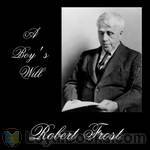 A Boy's Will
A Boy's Will
Robert Frost preferred to describe the New England countryside using everyday language. He used both as tools to explore world views and life philosophies. A Boy's Will was his first poetry anthology. | |
By: Edgar Lee Masters (1868-1950) | |
|---|---|
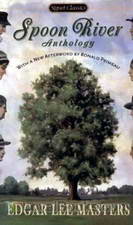 Spoon River Anthology
Spoon River Anthology
Two hundred and twelve residents of a small town tell their stories without fear of recrimination or ridicule. The only difference is that they're all dead! The two hundred and forty-four poems that form the Spoon River Anthology by Edgar Lee Masters is really a series of epitaphs about the citizens of a fictional town called Spoon River and deals with the “plain and simple annals” of small town America. Edgar Lee Masters grew up in a small town in Illinois. His father's financial problems forced the young Masters to abandon ideas of college and take up a job instead... | |
By: Wilhelm Busch (1832-1908) | |
|---|---|
 Max and Maurice a juvenile history in seven tricks
Max and Maurice a juvenile history in seven tricks
| |
By: Margaret Sidney (1844-1924) | |
|---|---|
 Twilight Stories
Twilight Stories
| |
By: Henry Wadsworth Longfellow | |
|---|---|
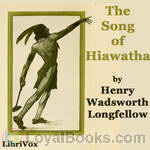 Hiawatha
Hiawatha
I sing the Song of Hiawatha,Brave of heart and strong of arm.Daughter’s son of old Nokomis,Fathered by the harsh West Wind. With its regular, beating rhythm, the Song of Hiawatha has often been parodied, but in truth, it is a powerful, emotional epic; a hero’s life, his loves and suffering. The legends and traditions of the North American Indian swirl together through the tale like a mountain stream, tumbling white over the rocks, and caressing the mossy tree roots. | |
 Evangeline
Evangeline
Evangeline is one of Longfellow’s most popular poems and was once a great favorite with the American people. For many years almost every school child studied this poem during the middle school years. Although the decline of the reputation of the once-idolized poet has also brought neglect to this classic, it is still a very touching and expertly written work of art. It is based upon the tragic expulsion of the French settlers from Acadia (located in the Canadian maritime provinces) during the French & Indian War (1754-1763)... | |
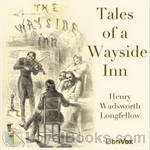 Tales of a Wayside Inn
Tales of a Wayside Inn
Mostly a collection of story-telling poems told by a group of friends in a tavern late one night. "Tales" includes the famous Paul Revere's ride, together with poems of many tales, countries and styles. | |
 The Song of Hiawatha An Epic Poem
The Song of Hiawatha An Epic Poem
| |
 The Children's Longfellow Told in Prose
The Children's Longfellow Told in Prose
| |
 Evangeline with Notes and Plan of Study
Evangeline with Notes and Plan of Study
| |
By: William Makepeace Thackeray (1811-1863) | |
|---|---|
 Ballads
Ballads
| |
 The Loving Ballad of Lord Bateman
The Loving Ballad of Lord Bateman
| |
By: Samuel Taylor Coleridge (1772-1834) | |
|---|---|
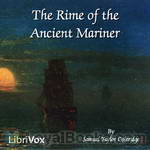 The Rime of the Ancient Mariner
The Rime of the Ancient Mariner
An exciting, compelling, and eerie ballad, The Rime of the Ancient Mariner focuses on the uncanny experiences of a sailor who has returned from a long sea voyage that has left him with a heavy burden to bear. Furthermore, the poem explores numerous themes including retribution, suffering, salvation, torment, nature, spirituality, and supernaturalism. The poem opens with the appearance of its mysterious protagonist, a skinny old man with a curious glittering eye, as he stops a young man who is on his way to attend a wedding... | |
By: William Wordsworth (1770-1850) | |
|---|---|
 Lyrical Ballads (1798)
Lyrical Ballads (1798)
Lyrical Ballads, with a Few Other Poems is a collection of poems by William Wordsworth and Samuel Taylor Coleridge, first published in 1798 and generally considered to have marked the beginning of the English Romantic movement in literature. The immediate effect on critics was modest, but it became and remains a landmark, changing the course of English literature and poetry. Most of the poems in the 1798 edition were written by Wordsworth, with Coleridge contributing only four poems to the collection, including one of his most famous works, "The Rime of the Ancient Mariner"... | |
By: Samuel Taylor Coleridge (1772-1834) | |
|---|---|
 Answer to a Child's Question
Answer to a Child's Question
LibriVox volunteers bring you 21 recordings of Answer to a Child's Question by Samuel Taylor Coleridge. This was the Weekly Poetry project for October 6, 2013. | |
 Coleridge's Ancient Mariner and Select Poems
Coleridge's Ancient Mariner and Select Poems
| |
By: Ambrose Bierce (1842-1914) | |
|---|---|
 Interpretation
Interpretation
LibriVox volunteers bring you 8 recordings of An Interpretation by Ambrose Bierce. This was the Weekly Poetry project for September 22, 2013. | |
By: Vachel Lindsay (1879-1931) | |
|---|---|
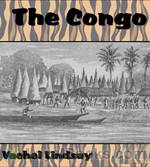 The Congo
The Congo
The Congo is one of the best-known poems by American poet Vachel Lindsay (1879-1931). It was revolutionary in its use of sounds and rhythms — as sounds and rhythms — and includes elaborate annotations to guide its spoken performance. Lindsay categorized The Congo as “higher Vaudeville” and was famous for his exuberant performances of it. The poem’s imagery is racist, but Lindsay was a product of his time — born 14 years after the end of the American Civil War in Abraham Lincoln’s hometown, he revered Lincoln and viewed himself as a friend and supporter of African-American culture. | |
 Chinese Nightingale and Other Poems
Chinese Nightingale and Other Poems
This is a collection of poems on various topics by Vachel Lindsay. Please note that the Booker T. Washington trilogy had to be omitted from this collection. | |
By: William Wordsworth (1770-1850) | |
|---|---|
 The Prelude
The Prelude
Among monuments of narrative poetry, The Prelude; or, Growth of a Poet's Mind, by William Wordsworth, occupies a unique place. Wordsworth published the first version of the poem in 1798, but continued to work on it for the rest of his life. The final version, which is the subject of this recording, was published posthumously in 1850, by Wordworth’s widow, Mary. The Prelude is the first major narrative poem in European literature which deals solely with the spiritual journey of the author. In this respect the only predecessor to which it can be compared in Dante’s Divine Comedy, which is similarly a journey from personal confusion to certitude, from ignorance to realization... | |
By: John Buchan (1875-1940) | |
|---|---|
 The Moon Endureth: Tales and Fancies
The Moon Endureth: Tales and Fancies
| |
By: Guy Wetmore Carryl | |
|---|---|
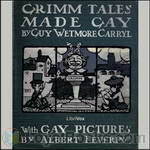 Grimm Tales Made Gay
Grimm Tales Made Gay
A comic rendering in verse of well-loved Fairy Tales of the Brothers Grimm, each ending with a moral and full of puns. The titles of the tales themselves make another verse. | |
By: Robert W. Service (1874-1958) | |
|---|---|
 Ballads of a Bohemian
Ballads of a Bohemian
Ballads of a Bohemian is a collection of poems tied together by the narration of the “author” Stephen Poore. The poems speak of bohemian life in Paris before the war, his experiences during World War I and its aftermath. | |
 Selections from Ballads of a Cheechako
Selections from Ballads of a Cheechako
These twelve poems are from Ballads of a Cheechako which was Robert W. Service’s third book of Yukon poems, published in 1909. The word Cheechako, from Chinook Jargon, originated in the United States (Alaska) and Canada (Yukon) and was imported into local English during the Yukon gold rush that began in 1896. Cheechako, is a non derogatory word meaning “newcomer” or “tenderfoot.” The derivation looks something like this: chee new cha come ko home. | |
 Ottawa Folk Festival Robert Service Collection
Ottawa Folk Festival Robert Service Collection
The Spell of the Yukon by Robert Service with patrons, musicians and organizers. Robert Service is an iconic Canadian poet. | |
By: Susanna Moodie (1803-1885) | |
|---|---|
 Roughing It in the Bush
Roughing It in the Bush
'Roughing It In the Bush' is Susanna Moodie's account of how she coped with the harshness of life in the woods of Upper Canada, as an Englishwoman homesteading abroad. Her narrative was constructed partly as a response to the glowing falsehoods European land-agents were circulating about life in the New World. Her chronicle is frank and humorous, and was a popular sensation at the time of its publication in 1852. | |
By: Aeschylus (c. 525/524-456/455 BC) | |
|---|---|
 Prometheus Bound (Browning Translation)
Prometheus Bound (Browning Translation)
Whether or not it was actually written by Aeschylus, as is much disputed, "Prometheus Bound" is a powerful statement on behalf of free humanity in the face of what often seem like the impersonal, implacable Forces that rule the Universe. As one of the most compelling rebel manifestos ever composed, it has appealed not only to the expected host of scholars of Greek drama, but also to a fascinatingly free-spirited array of translators, especially since the early 19th century; Percy Bysshe Shelley, Henry David Thoreau, and activist-poet Augusta Webster are among those who have tried their poetic and linguistic powers at rendering it into English... | |
By: Elizabeth Barrett Browning (1806-1861) | |
|---|---|
 'He Giveth His Beloved Sleep'
'He Giveth His Beloved Sleep'
| |
By: Edna St. Vincent Millay (1892-1950) | |
|---|---|
 A Few Figs from Thistles
A Few Figs from Thistles
A collection of 23 poems by Edna St. Vincent Millay. | |